In the first chapter we saw that there was nothing, and then the inorganic came into existence: “In the beginning God created the heaven and the earth.”
The next step in creation was the organic, that is, the creation of life. We saw that in verse 21 where it says that God created great whales and then all animal life.
He created animal life, but apparently the plant life had not been destroyed, and at the time of the re–creation, the seed was already in the earth.
I would not want to be dogmatic, but this would seem to be the implication here. God has told us very little in this regard. Then man is the next step in the creation.
There is actually no natural transition, and evolution cannot bridge the gap that brings us to the appearance of Homo sapiens on the earth.
The earth, therefore, was prepared for the coming of man.
Genesis 2:7-15 KJV
[7] And the LORD God formed man of the dust of the ground, and breathed into his nostrils the breath of life; and man became a living soul.
[8] And the LORD God planted a garden eastward in Eden; and there he put the man whom he had formed.
[9] And out of the ground made the LORD God to grow every tree that is pleasant to the sight, and good for food; the tree of life also in the midst of the garden, and the tree of knowledge of good and evil.
[10] And a river went out of Eden to water the garden; and from thence it was parted, and became into four heads.
[11] The name of the first is Pison: that is it which compasseth the whole land of Havilah, where there is gold;
[12] And the gold of that land is good: there is bdellium and the onyx stone.
[13] And the name of the second river is Gihon: the same is it that compasseth the whole land of Ethiopia.
[14] And the name of the third river is Hiddekel: that is it which goeth toward the east of Assyria. And the fourth river is Euphrates.
[15] And the LORD God took the man, and put him into the garden of Eden to dress it and to keep it.
Genesis 2:7
And the LORD God formed man of the dust of the ground. And breathed into his nostrils the breath of life. And man became a living soul.
This scripture proclaims the physical body made of clay.
The “breath of life,” which comes from God, pertains to the soul and spirit of man; this was done with the first man, Adam, God breathing the soul and the spirit into man, and thereafter it comes automatically at conception.
Man is a soul, has a spirit, both which reside in the physical body; the soul addresses the body; the spirit addresses God; the physical body addresses the world.
Perhaps the water mixed with dust provides clay the Lord God uses to create man (compare Job 10: 9; 33: 6; Isaiah 45: 9; Romans 9: 21). The sound of the Hebrew word for man, which is Adam (Genesis 2: 19), resembles closely the word for ground.
Thus the lofty image of being created in God’s likeness (1: 26) is now tempered with the reality of what constitutes the human body, its humble origin.
“The first man is of the earth, earthy” (1 Corinthians 15: 47). Some have proposed that for God to breathe the breath of life into the man is to place a tiny portion of God’s very own essence into a human. This is wrong.
When 2 Peter 1:4 speaks of being “partakers of the divine nature,” the meaning is that we share in those attributes of God that He grants us as His image bearers (example: 1 Peter 1: 15, 16). No part of our essence as humans is uncreated.
On first reading, this phrase may lead one to believe that it is at this point that the first human receives that element of his nature that sets him apart from the animals: the soul.
But the original language behind the translation became a living soul is identical in the descriptions of other creatures in Genesis 1: 20, 24, 30; 2: 19).
We are indeed a combination of physical and spiritual (Matthew 10: 28), but that fact cannot be established from this verse. Here the sacred writer supplies a few more particulars about the first pair.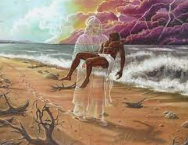
formed — had Formed Man Out Of The Dust Of The Ground Science has proved that the substance of his flesh, sinews, and bones, consists of the very same elements as the soil which forms the crust of the earth and the limestone that lies embedded in its bowels.
But from that mean material what an admirable structure has been reared in the human body (Psalm 139:14). The breath of life — literally, of lives, not only animal but spiritual life.
If the body is so admirable, how much more the soul with all its varied faculties.
Breathed into his nostrils the breath of life — not that the Creator literally performed this act, but respiration being the medium and sign of life, this phrase is used to show that man‘s life originated in a different way from his body – being implanted directly by God (Ecclesiastes 12:7), and hence in the new creation of the soul Christ breathed on His disciples (John 20:22).
This is the moment when all human life begins. Genesis 1 describes the creation of the entire universe. As part of that story, men and women are also formed (Genesis 1:27).
Genesis chapter 2 narrows focus on the creation of the first man, giving additional details, and helping us to see that humanity is special among all the rest of creation.
In Genesis 1:1, God’s creation is described using the term bā’rā, which implies “creation” in the sense of “coming into being,” or of “something from nothing.” But here, in Genesis 2:7, the creation of the first human being uses the Hebrew word for “formed:” yi’ser.
This describes the actions of an artist, a sculptor, or a potter. This term is specific in that it always refers to work done on some existing substance. In this case, God is forming human life from the ground itself. That Hebrew word is ā’pār, which refers to dirt, powder, debris, or ash.
Following the storyline of this verse, after being “formed,” man was merely a lump of well-formed dirt. It’s what God did next that made us alive: He breathed into the man’s nose the breath of life.
Literally, God breathed life into the lump, transforming it into a living being, or “creature,” or “soul.”
All of life originated with God, but human life began with the personal breath of God. Without God, we simply would not live. The name Adam is directly from the Hebrew ā’dām, which literally means “man.”
This name reflects the dust from which we were formed: the Hebrew word for ground is adamah.
All of this, as one can imagine, adds fuel to the debate over exactly how God went about bringing human life onto the earth. Regardless of the specific process involved, this verse clearly states that God Himself formed man out of the dust of the ground.
God personally designed the size, shape, and detail of the first man. God was intentional, fashioning exactly what He set out to make. According to the book of Genesis, the form of that first man was “very good” (Genesis 1:31).
Genesis 2:8
And the LORD God planted a Garden eastward in Eden; and there He put the man whom He had formed.
The Garden of Eden.
Eden — was probably a very extensive region in Mesopotamia, distinguished for its natural beauty and the richness and variety of its produce. Hence its name, signifying “pleasantness.”
God planted a garden eastward, an extensive park, a paradise, in which the man was put to be trained under the paternal care of his Maker to piety and usefulness.
It was actually planted before Adam was created; the area is believed by some Scholars to be the site where the city of Babylon would ultimately be built. The Garden of Eden was to be the home place of man.
After forming the first human being, God planted a garden in a region called Eden. English translations of this verse all include some concept of “east” in describing the location of this garden.
The original Hebrew says gan b ē’den mi qe’dem, which most literally means “a garden towards the east, in Eden.” It should be pointed out that “Eden,” literally speaking, is the territory where the garden is located, not the actual garden itself.
From the geography given in the following verses, it seems logical to conclude that Eden was in the region of Mesopotamia. By implication, Genesis’ original audience would have been to the west of that area.
The first chapter of Genesis shows God as a provider. In each of the first three days, He fashions an environment suitable for a later creation. On days four, five, and six of the creation week, God places a new creation into each of those prepared places.
Here, we see God making provisions for man, planting a garden of trees, and placing the man there. This garden would be man’s first home.
Genesis 2:9
And out of the ground made the LORD God to grow every tree that is pleasant to the sight, and good for food; the tree of life also in the midst of the garden, and the tree of knowledge of good and evil.
Tree of life — so called from its symbolic character as a sign and seal of immortal life. Its prominent position where it must have been an object of daily observation and interest, was admirably fitted to keep man habitually in mind of God and futurity.
These are beautiful trees. These are every fruit tree imaginable, even those which bear nuts. This tree evidently contained a type of fruit; 3:22 says as much!
The Tree of Life had the power of so renewing man’s physical energies that his body, though formed of the dust of the ground and, therefore, naturally mortal, would, by its continual use, live on forever; Christ is now to us the “Tree of Life” [Rev. 2:7; 22:2]; and the “Bread of Life” [Jn. 6:48, 51]).
The Tree of Knowledge of Good and Evil presents the tree of death.
Tree of the knowledge of good and evil — so called because it was a test of obedience by which our first parents were to be tried, whether they would be good or bad, obey God or break His commands.
The previous verse described God planting a garden, somewhere to the east of the land occupied by Genesis’ original readers. This region—not merely the garden itself—is referred to as “Eden.”
Here, that garden is described as a place where God caused to “spring up” a variety of beautiful trees bearing good fruit. According to this description, there were many different types of fruit-bearing trees in this location.
Two specific trees are mentioned by name as standing in the middle of the garden: the Tree of Life and the Tree of the Knowledge of Good and Evil. We will soon learn that God had designed these two trees with special properties.
Those who ate from the Tree of Life would live forever (Genesis 3:22). The function of this tree seems to be that immortality comes from continually eating from it. God did not prohibit Adam and Eve from eating its fruit at first, and they were not rendered permanently immortal by it.
On the other hand, those who ate from the Tree of the Knowledge of Good and Evil would leave behind their blissful state of innocence. In later verses, God will forbid Adam from eating from this tree.
The “knowledge” here is not necessarily intellectual, but that of experience. The fruit of this tree would not, in and of itself, impart information. However, it would cause mankind to experience both good and evil in ways not intended by God.
Eating from this tree would make man aware of the existence of evil—which is opposition to God—by participating in it.
In verse 17, we will hear God instruct the man never to eat from the Tree of the Knowledge of Good and Evil. In chapter 3, we will see the man break that command with disastrous results.
Genesis 2:10
And a river went out of Eden to water the Garden; and from thence it was parted, and became into four heads.
This means four rivers.
The next five verses are a parenthesis: a separate section of the text. From a narrative standpoint, this passage could be set off to the side without disrupting the flow of the story.
These words explain the geography of the Garden of Eden, and give more information on where it was located. The main story will resume in verse 15.
According to verse 10, a mighty river watered Eden’s garden. As mentioned before, “Eden” includes more than just the garden; it seems to be a geographical region. After leaving the area of Eden itself, this river split into four separate streams.
These are listed in verses 11 through 14 as the Pishon, Gihon, Tigris, and Euphrates. The description of those four rivers will help to locate the region of Eden—though not the specific location of the garden—in the known world of the time.
The Tigiris and Euphrates rivers are known today, in the geographical area most likely to have been near Eden. The other two rivers, however, may or may not exist today.
Given that this is pre-flood geography, there is no way to say for sure if these rivers are exactly the same as the waterways currently called by those names.
Genesis 2:11
The name of the first is Pison: that is it which compasseth the whole land of Havilah, where there is gold;
Pison is believed to be the “Ganges” river. The whole land of Havilah, where there is gold is believed to be India.
Verses 10 through 14 describe the territories around Eden, by commenting on the great river which flowed out of the region and divided into four smaller rivers.
These details correspond to rivers or lands we know in the modern world, helping us understand where the region of Eden was without knowing the specific location of the garden.
The first of the four rivers described is Pishon. The word Pishon means “to leap” and may have come from a physical description of the river itself. The river might have been turbulent, crooked, or steep and filled with waterfalls and eddies.
Pishon is described as flowing around the land of Havilah. Scholars suggest Havilah may be Arabia, an area known for gold. If that’s right, Pishon would be an Arabian river or one associated with the Persian Gulf.
Unlike two of the other rivers identified in this passage, Tigris and Euphrates, we don’t have an explicit connection between this “leaping” river and a known waterway in the modern world.
Genesis 2:12
And the gold of that land is good: there is bdellium and the onyx stone.
Verses 11 and 12 present the first mention in the Bible of the precious metal, gold; it is mentioned last in the Bible as it refers to the main thoroughfare of the New Jerusalem, in which we are told is “pure gold” [Rev. 21:21]).
This passage helps us to understand where the region of Eden was without knowing the specific location of the garden. Verses 10 through 14 describe the four smaller rivers which came from a larger river flowing out of the territory of Eden.
These rivers correspond to rivers and lands we know in the modern world.
The previous verse described the first of those four rivers. The river Pishon was said to flow around the land of Havilah, “where there is gold.” Some scholars understand Havilah to be Arabia, an area known in the ancient world as a great source of gold.
The name means “to leap,” which might imply a steep, turbulent, or dangerous river.
This verse describes the quality of that gold as good or possibly pure. Also found in the region were onyx stone, which would later be important to Israel, in decorating the temple and tabernacle.
This land is said to have been rich in bdellium, a translucent substance—though due to ancient flexibility in describing gems and minerals, this particular mention might be of some completely different stone.
In any case, the region being described is one rich in specific resources. And, as such, it is clearly meant to be understood as a literal location.
Genesis 2:13
And the name of the second river is Gihon: the same is it that compasseth the whole land of Ethiopia.
Gihon is believed to be the Nile river.
Verses 10 through 14 describe the great river that flowed out of the region of Eden, dividing into four smaller rivers.
These rivers correspond to rivers and lands we know in the modern world, helping us to understand where the region of Eden was. It does not, however, give us enough information to know the exact location of the garden.
The first river mentioned was named Pishon, and its territory is said to have been rich in gold, onyx, and bdellium.
The second river described is the Gihon river, one that flowed around the land of Cush. As used in the Bible, the region of “Cush” usually refers to the land of Ethiopia, which is quite some distance from the other territories mentioned in this passage.
Scholars suggest this may be a different area known in ancient times as Cush, perhaps in the mountains of Mesopotamia.
As with the Pishon, we cannot make a strong link between this river and one known in the modern world. As this description is of a pre-flood world, there is a possibility that the river was destroyed and no longer exists.
It is also possible that what this passage calls the Pishon and Gihon might be tributaries of the larger Euphrates river.
Genesis 2:14
And the name of the third river is Hiddekel: that is it which goeth toward the east of Assyria. And the fourth river is Euphrates.
Hiddekel is believed to be the Tigris river. These rivers at the present time have their sources far apart. The explanation, no doubt, lies in the flood, which altered the topography of the Earth.
The headwaters of the first two were drastically changed, while the last two remain basically the same.
In fact, it is believed that the Garden of Eden may have been located, as stated, at the joining of the Tigris and Euphrates, which is the site of ancient Babylon.
This passage, starting in verse 10, describes a river which splits into four smaller waterways after leaving Eden. These rivers show connections to rivers and lands we know in the modern world, but for the most part cannot be explicitly identified.
These details would have been useful for the original readers of Genesis, in knowing where Eden was located, but without knowing exactly where the garden had been.
Scholars do not universally agree on the locations of the previous two rivers mentioned, Pishon and Gihon, but the Tigris and Euphrates are well known rivers in the region to this day. In fact, these waterways are strongly connected with the ancient region known as Mesopotamia.
The Tigris flows east of the ancient Assyrian capital of Ashur. The Euphrates river is to the west of the Tigris. These rivers flow from the region of modern-day Turkey, through modern-day Iraq, and join into a single path before emptying into the Persian Gulf.
Genesis 2:15
And the LORD God took the man, and put him into the Garden of Eden to dress it and to keep it.
This man had dominion, and the forces of nature responded at his beck and call.
Put the man into the garden of Eden to dress it — not only to give him a pleasant employment, but to place him on his probation, and as the title of this garden, the garden of the Lord (Genesis 13:10; Ezekiel 28:13), indicates, it was in fact a temple in which he worshipped God, and was daily employed in offering the sacrifices of thanksgiving and praise.
One of the most important lessons which jumps out from this verse is that immediately after he was created, the first man had a God-given purpose. God placed him into the paradise of the garden of Eden with a job to do.
God had created a world which included work needing to be done; He created man with a mission to do that work. Logically, God didn’t need to structure the world in this way. He could have created a world that was fully self-sustaining.
He could have made human beings to simply live in luxury and enjoy all of God’s creation without ever having to contribute anything.
That, however, was not God’s design. Even before sin entered the world, human beings were meant to work, to help to accomplish God’s purpose.
That is built into us. Chapter 3 will reveal that sin changed the nature of our work and our response to it, but work itself is not a curse. It is part of our purpose as God’s creatures.
This first man’s work was relatively simple and straightforward: to maintain the garden of Eden. This purpose will be lost when he sins, later in this story.
For those restored to fellowship with God through faith in Christ, that sense of purposeful work begins to be restored, as well. Paul writes in Ephesians 2:10, “For we are his workmanship, created in Christ Jesus for good works, which God prepared beforehand, that we should walk in them.”
I hope that you have really enjoyed this post,
Please Leave All Comments in the Comment Box Below ↓

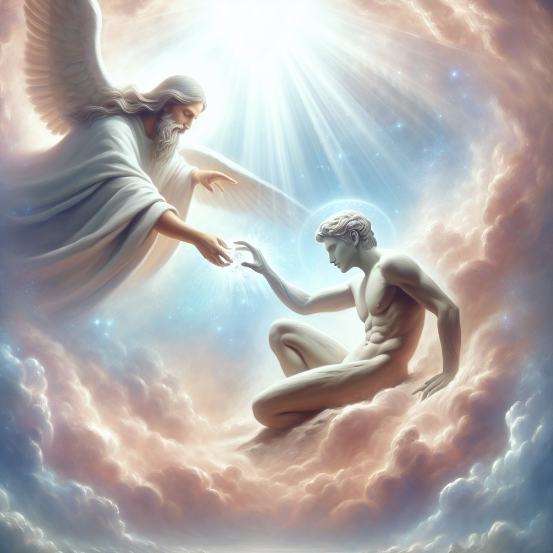

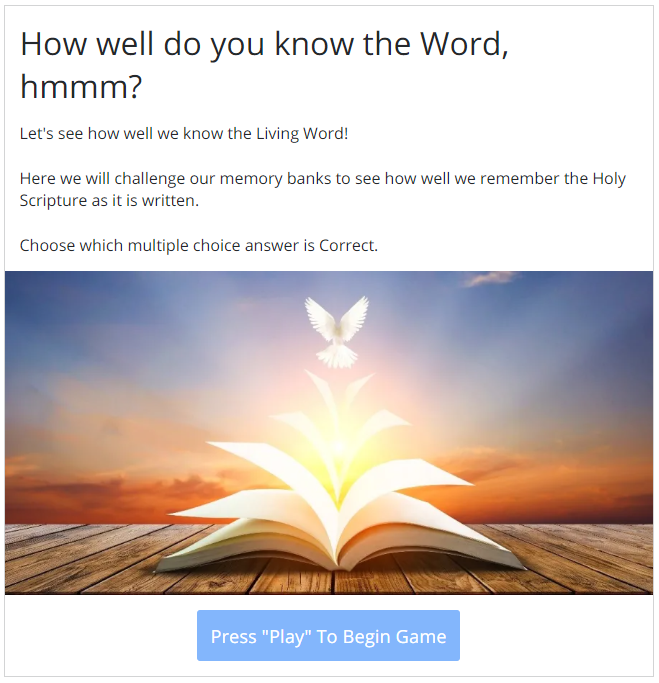




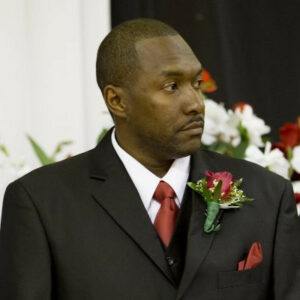
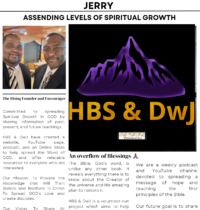


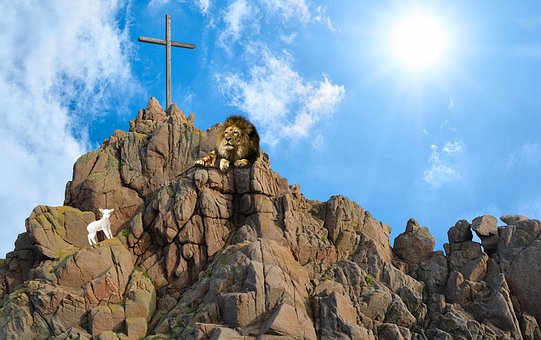
HI Jerry,
Thank you for posting this article about the creation of man. I liked the way you went through verse by verse to give meaning to the account.
I also believe that evolution was not the process. God spoke and His creation came into being. Evolution over millions of years requires death, but death did not enter in His creation until the Fall of man in Genesis 3. There was no death until then.
I have studied creation science and believe it is a very important part of a Christian’s worldview.
Thank you again.
Hello,
You are most definitely welcome for the posting of this article.
I am grateful to learn that you like the way I have broken down the meaning of each verse. It is always good to learn that there are more people who support this information on their own free will.
Thank you for stopping by and sharing your thoughts.
I Am Forever Grateful,
Jerry
In this captivating piece, the transition between animal life and human life is explored in depth, inviting readers to ponder the origin of mankind.
Brilliantly, verses from Scripture are cited as supporting evidence, emphasizing the power of Scripture. For me, comprehending the narrative of creation as told in the Bible has brought about an appreciation for all things living.
Undoubtedly, the article puts forth a convincing case for man’s life being created by God’s breath, firmly rooted in His Word, “Let there be Life.”
Hello,
Thank you for sharing your thoughts, and also taking the time to read and comment on this Study Session.
Have A Blessed Life,
Jerry
I like it, the topic is so interesting.
I’ve heard the story about man’s creation. The whole part of all these stories is the same but, there are some differences in details.
The idea that we are made of clay is the same in all religions. Reading these Genesis verses commentary through your post is so amazing and interesting. I enjoyed it.
Thanks for sharing this post.
Wish you the best.
Hello Liam Tremblay,
Thanks for your continued support, as well as, your time to read and comment on different parts of this HBS & DwJ Website.
I am most certainly pleased that you enjoy returning to this website continuously.
You are welcome for the sharing of this post.
Wishing you the best as well.
I have heard of the story of Creation but never in such detail.
This may sound silly, but I did not know that God created great whales first and THEN the rest of the animals.
Is there a specific reasoning/meaning behind that?
I didn’t know whales had such a religious connotation.
Thank you for providing this enlightening information.
Hello Kate,
I’m not sure how your question relates to About Man’s Creation – How He Was Made, but it is an iInteresting question.
The bible isn’t clear on the “first “animal, yet, on Day Four of creation –
Genesis 1:20 KJV
[20] And God said, Let the waters bring forth abundantly the moving creature that hath life, and fowl that may fly above the earth in the open firmament of heaven.
Yet if we acknowledge the huge bones that have been found for hundreds of years now, given the name of “Dinosaurs”, we can notice a peculiar Hebraic word that is used in the next verse.
Genesis 1:21 KJV
[21] And God created great whales, and every living creature that moveth, which the waters brought forth abundantly, after their kind, and every winged fowl after his kind: and God saw that it was good.
The word is Great “tanniym”. Defined in Strongs Concordance as: “a marine or land MONSTER, sea-serpent, jackal, dragon, serpent, whale.”
Out of the 28 times “Tanniym” is in the scriptures, 21 times it’s translated “Dragon”.
Now do I believe that there were actually “fire breathing”, “flying-winged”, “medieval” creatures – not at all. But there are these huge bones that are evidence of a type of monster, or something that’s GREAT.
Have A Blessed One Kate.
Thanks for this beautifully outlined and illustrated article.
The creation account in the Bible is amazing. For me, it demonstrates the intentionality of creation. I often read someone saying that they were assigned a sex at birth, but want to change it. I wonder who folks thinks did the assigning.
When I sit by a lake looking an listening, I am certain the creation is intentional. You have written about that here.
Have a blessed Easter.
Jim
Hello Jim,
Thank you for sharing your thoughts by commenting on About Man’s Creation – How He Was Made.
I really appreciate your description about this information being a beautifully outlined and illustrated article. When we take the time to sit back, relax, and look around at GOD’s Creation, and I mean REALLY Look at GOD’s Creation, it is, TRULY Amazing!
Thanks again Jim,
Blessings My Firend.
You did a great job in explaining in detail the creation of man by God, Jerry.
And you did it using Scriptures to support your claim, considering that the creation of man is a hotly debated topic up until today. Many people still believe in evolution even though nobody can show any evidence of the actual evolution process.
I’d say that God creating man and everything on earth by the word of His mouth is the best explanation of how man and all other things, whether living or non-living, came into existence.
But how do we explain this to atheists and skeptics who already have a preconceived notion about man’s creation even before they get to listen to what we have to say?
By the way, I appreciate that you clarified one common misconception, which is, when God breathed into man the “breath of life,” He placed a tiny portion of His very own essence into the man.
When the Bible says that God made man in His own image and likeness, it means we share God’s attributes.
Hello Alice,
Thank you so much for taking the time to comment, share your thoughts and ask questions.
I definitely agree with your comment, and as far as your question goes, atheists and skeptics who already have preconceived notions about man’s creation before they listen to what others have to say have already made their minds up.
A change of heart is the thing that will get them to see things differently, and even then they have to be in acceptance to that, by using their own free will to believe as believers in Jesus Christ does.
Thank you again for your comments, thoughts, and questions. I will also like to thank you for your appreciation concerning the HBS & DwJ Website.
Blessings My Friend.